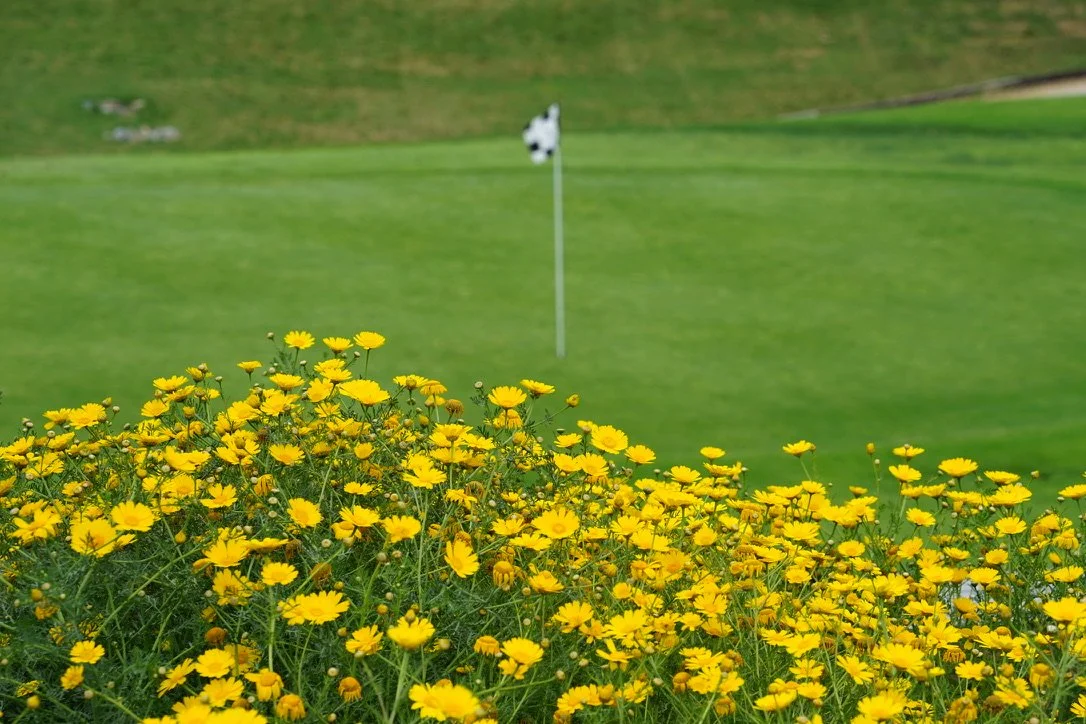Greener Golf Mission
By aiming the golf industry towards a beyond sustainable future, Greener Golf reimagines what golf is and what it can be. Rooted in the foundational principles of respect, responsibility, and integrity, Greener Golf focuses on creating golf courses that serve as catalysts for social connection, environmental sustainability, and community empowerment. Our mission is to facilitate positive changes in golf and society through the reconnection and partnership with nature.
What Greener Golf Means…
-
What it means: Permaculture design utilizes three fundamental ethics - care for the earth, care for people, and fair share. These three ethics work together to inform decision-making and design process
How we use it: We help golf courses apply permaculture ethics as the guiding principles in golf course design and management work to achieve their highest level of impact and enjoyment.
-
What It Means: The benefits of golf should be enjoyed by everyone, regardless of background, age, or skill level.
How We Use It: We collaborate with golf courses to transform them into multifunctional spaces that benefit both golfers and non-golfers alike. By creating inclusive designs and offering opportunities beyond the game, such as walking trails, wildlife habitats, and community events, Greener Golf ensures that everyone in the community can enjoy the physical, mental, and social benefits that these green spaces provide.
-
What It Means: Golf courses should serve as community hubs, offering more than just a place to play; they should bring people together and partner with local community organizations to foster a sense of community.
How We Use It: We help courses engage and support their local communities. This includes hosting educational programs, environmental stewardship initiatives, and events that bring people together for a shared purpose. By making golf courses hubs of community activity, we ensure they become spaces where everyone, golfers and non-golfers alike, can connect, learn, and thrive.
-
What It Means: Golf courses should enhance, not harm, the environment.
How We Use It: Greener Golf knows that courses can be designed in ways that protect and strengthen the surrounding ecosystem. We use practices like organic turf management, habitat restoration, and water conservation to ensure that courses support wildlife, improve water quality, and contribute to the mitigation of the climate crisis. Our goal is to maximize the ecosystem services that golf courses provide while simultaneously providing exceptional golf.
-
What It Means: Sustainability in golf requires forward-thinking solutions and the adoption of new (and sometimes old)technologies.
How We Use It: We embrace innovation not just through cutting-edge technology, but also by reintroducing proven ecological practices when they offer the greatest benefit. Whether it is precision irrigation systems, renewable energy integration, grazing animals for vegetation control, or restorative planting techniques, we prioritize solutions that deliver the best outcomes for both the environment and golfers. Our Greener Golf Index (GGI) is a key part of this strategy, providing the data and insight needed to guide these decisions and help courses continuously evolve their sustainability efforts.
Why Greener Golf?
In the early days of golf, the game was a low-impact activity that left natural landscapes nearly untouched and inherently sustainable. Early courses, like Scotland’s Old Course at St. Andrews (est. 1552), thrived with minimal maintenance, proving that sustainable design can stand the test of time.
After World War II, the golf industry underwent significant changes. Advances in fertilizers, pesticides, and irrigation led to the development of new practices to maintain pristine courses, but these methods were environmentally costly. This industrial approach increased operating expenses and fueled golf’s reputation as an exclusive, resource-intensive sport.
Today, many courses are redefining golf course functionality by striking a balance between environmental stewardship, community engagement, and economic sustainability. Golf courses like Goat Hill Park and The Preserve Golf Club, both in California, actively work to restore ecosystems by enhancing biodiversity. CommonGround Golf Course in Colorado and Bandon Dunes in Oregon empower local communities by prioritizing employment opportunities and community involvement. Courses can also improve environmental stewardship by introducing regenerative practices, such as reducing or eliminating chemical inputs and fostering healthy soil. These improvements can help courses cut costs while protecting the environment.
How does Greener Golf fit in?? Greener Golf envisions a future where golf courses act as responsible community members. By integrating with and giving back to their host communities, courses can provide environmental benefits, economic opportunities, and inclusive experiences.
The next chapter of golf isn’t just about excellent playing conditions; it’s about creating courses that respect the land, uplift communities, and embrace a sustainable future.


